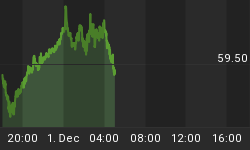Our real time recession indicator is constructed from various leading economic indicators and two pricing models. The indicator continues to show that the US economy is NOT in a recession. However, the indicator has begun to show weakness in the economy.
The following data is used in the construction of the indicator: 1) Aruoba-Diebold-Scotti Business Conditions Index (ADS); this is from the Philadelphia Federal Reserve and it is designed to track real macroeconomic activity at a high frequency; 2) the Chicago Fed National Activity Index (CFNAI); this is from the Chicago Federal Reserve, and it uses 85 different variables in its computation; 3) There are two components from the Economic Cycle Research Institute, the Leading Economic Indicator (LEI) and Weekly Leading Index (WLI). Two pricing models are used. One is the Faber model, which looks at price in the SP500 relative to its simple 10 month moving average. The second is proprietary, and it looks at price relative to past pivot points and trend lines formed by those pivot points. The final composite indicator is shown in figure 1, a weekly chart of the SP500.
Figure 1. Real Time Recession Indicator
Currently, the CFNAI and ADS data are consistent with an economic contraction/ stagnation. The CFNAI data is shown in figure 2, and the red labeled price bars are those times the CFNAI data was consistent with an economic contraction. Obviously, this is not a perfect correlation, but this is why we use multiple indicators.
Figure 2. CFNAI/ Real Time Recession
Figure 3 shows the ADS data. The ADS data is high frequency data and should have a higher number of false positives.
Figure 3. ADS/ Real Time Recession
In summary, the data is not consistent with a recession. However, two of the leading economic indicators that go into this composite indicator are consistent with weak economic growth.
Want more TacticalBeta? See our pricing chart and upgrade today. Get Started Now















